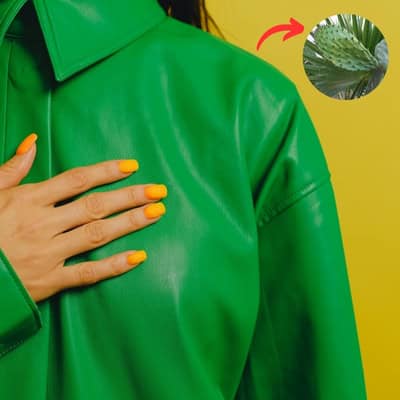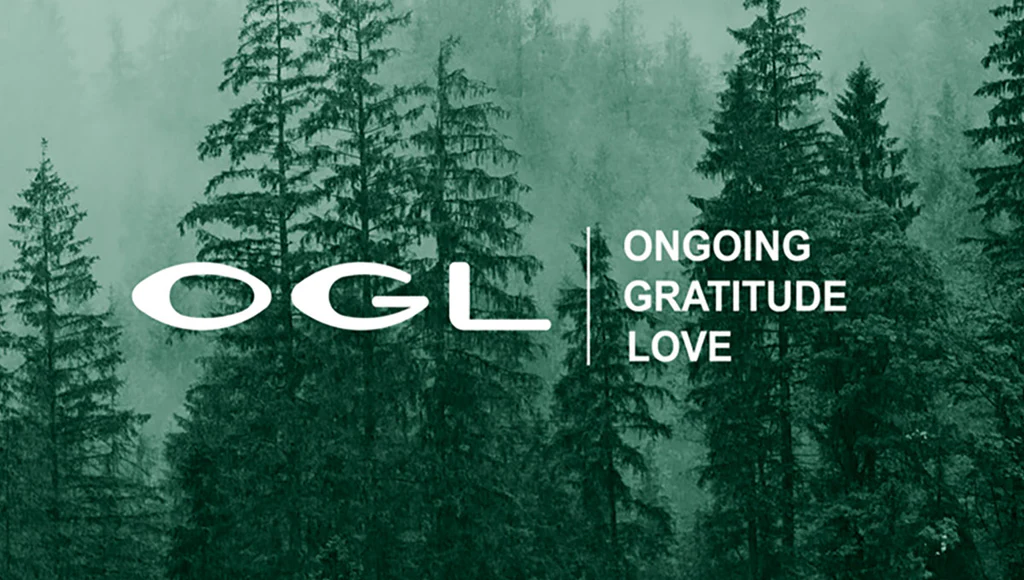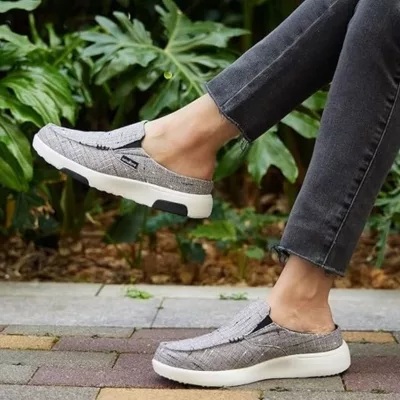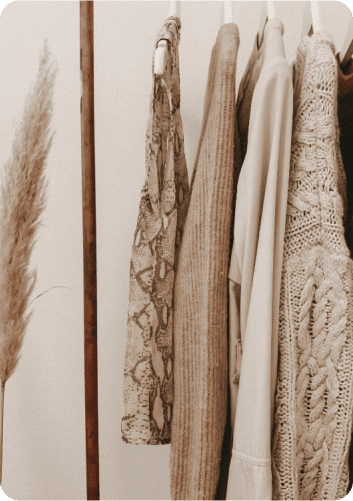Leather has been a fashion staple since ions. One of the first garments that we ever put on their backs, we can never deny its historical importance to humans and their wardrobes. But we’re in the 21st century. Now that the Internet has replaced pigeons, and solar-charging cars have replaced horses, it’s time to put animal-derived leather to rest as well.
The focus of this article is “Cactus Leather.” Made exclusively from Nopal Cactus plants, this vegan leather is everything its name tells you.
Ecowiser is always on the hunt for alternative fashion that spares animal and planetary cruelty. Let’s find out more about this cool kid on the block, and whether this vegan leather fabric worth adding to your wardrobe.
What is Cactus Leather?

Cactus leather, also known as “desserto” is derived from the mature leaves of the Nopal cactus. This species of cactus is native to Mexico. Developed and sold by friends Adrián López and Marte Cázarez, this vegan leather fabric is a synthetic leather with a vision to reduce the environmental impact of traditional leather in the textile industry.

This vegan leather has gained rapid popularity due to its alignment with the increasing consumer demand for sustainable and ethical products. Key factors include:
Eco-conscious Consumers: A growing awareness of environmental issues and animal welfare has led consumers to seek out sustainable alternatives to traditional leather.
Fashion Industry Adoption: Major brands and designers are increasingly incorporating it into their collections, showcasing its viability as a high-quality material.
Innovation and Quality: This vegan leather offers a compelling combination of sustainability, durability, and aesthetic flexibility, making it an attractive option for manufacturers and consumers alike.
Vegan Cactus leather fabric is an answer to the environmental, ethical, and practical concerns associated with traditional leather and other synthetic alternatives. Its sustainable production, low environmental impact, and versatile applications make it a promising solution for a more eco-friendly future in fashion and beyond.
How Is Cactus Leather Made?

The Nopal cactus (prickly pear) is cultivated in Mexico, where it thrives in arid conditions with minimal water. This makes it an excellent sustainable resource. The cactus is grown using organic farming methods without the use of pesticides or herbicides, ensuring a low environmental impact.
Only the mature leaves of the cactus are harvested. This method ensures that the plant remains healthy and continues to grow, allowing for multiple harvests each year. By harvesting only the mature leaves, the plant’s ability to regenerate is preserved, maintaining the sustainability of the resource.
Manufacturing & Processing
The harvested leaves are cleaned to remove any dirt or impurities. The cleaned leaves are then mashed and left to dry in the sun for three days. This natural drying process reduces the moisture content in the leaves, preparing them for further processing. Once dried, the leaves are ground into a fine powder.
The powdered cactus material is mixed with non-toxic chemicals. These chemicals are carefully selected to ensure they are environmentally friendly and safe for use. The mixture is blended to create a uniform, leather-like material. This blending process is crucial for achieving the desired texture and durability.
The blended material is then shaped into sheets or rolls, depending on the intended use. This can involve pressing and molding to achieve the correct thickness and texture. The formed sheets are treated to enhance their appearance and performance. This can include treatments for color, texture, and additional properties such as water resistance.
What Makes Cactus Leather So Popular?

Vegan Cactus leather has gained significant popularity in recent years due to a combination of environmental, ethical, and practical benefits. Here are some key factors that contribute to its rising popularity:
Sustainability
Water Efficiency: Nopal cacti require significantly less water compared to animal husbandry and even many other vegan leather alternatives like polyurethane and PVC.
Minimal Waste: The production process generates minimal waste, as the cactus leaves regenerate every 6-8 months.
Biodegradable: This leather is partially biodegradable, reducing its environmental impact compared to synthetic leathers.
Environmental Benefits
No Toxic Chemicals: The processing of this leather avoids the use of harmful chemicals such as chromium, which is prevalent in traditional leather tanning.
Reduced Carbon Footprint: The cultivation and processing emits fewer greenhouse gases compared to both animal leather production and synthetic leather manufacturing.
Durability and Versatility
Sturdy and Flexible: This leather is durable, flexible, and resistant to abrasion, making it suitable for various applications from fashion accessories to car interiors.
Aesthetic Appeal: It can be dyed and finished to resemble traditional leather, allowing for a wide range of styles and finishes.
Ethical Considerations
Animal Welfare: As a plant-based material, vegan leather eliminates the ethical concerns associated with animal leather, catering to the growing demand for cruelty-free products.
Fair Labor Practices: The manufacturing of “desserto” aka cactus leather, particularly in its primary region of Mexico, often supports local farmers and communities. By providing fair wages and safe working conditions, it promotes ethical labor practices and contributes to the socio-economic development of the region.
Cultural Respect: The cultivation and use of Nopal leather honor traditional Mexican agricultural practices and respect indigenous knowledge. This cultural respect fosters a deeper appreciation for the material and helps preserve important cultural heritage, linking modern sustainable practices with age-old traditions.
Is Cactus Leather Worth The Hype?

Cactus leather has generated significant buzz for its sustainability and ethical benefits. But is it Ecowiser approved? Let’s walk you through our thoughts. Ecowiser believes that whether or not this fabric lives up to the hype depends on various factors, including environmental impact, durability, cost, and consumer preferences.
Here’s where we stand on the pros and cons of cactus leather:
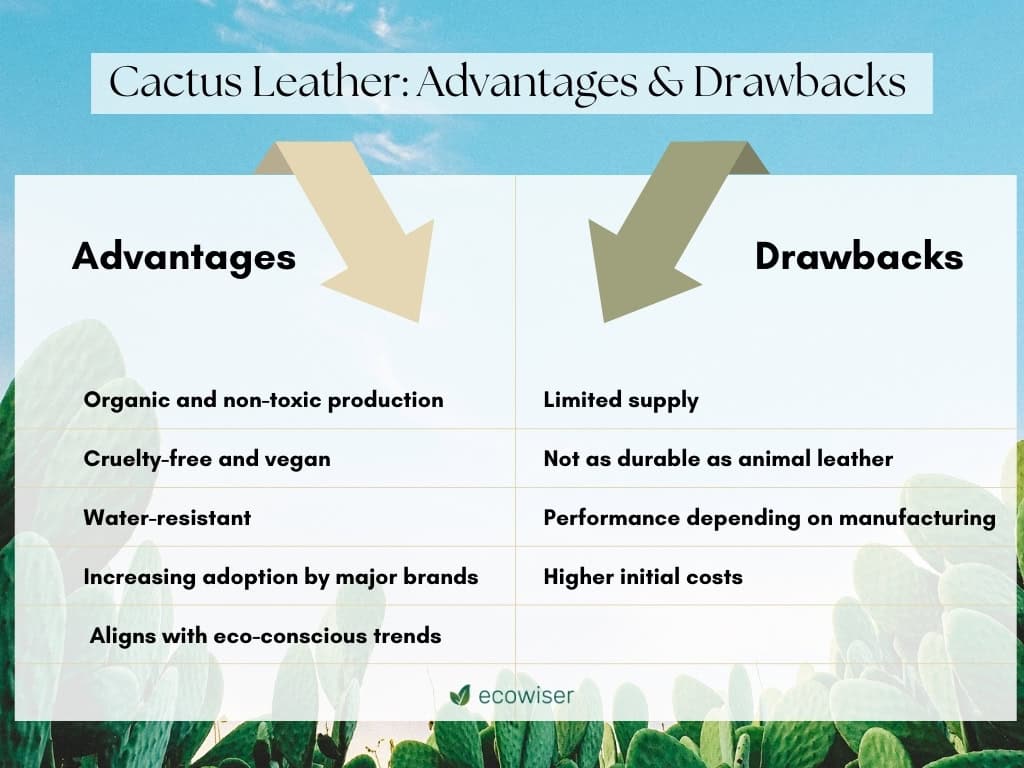
Will You Add Cactus Leather To Your Wardrobe?
This was all from our side on cactus leather. We talked you through the manufacturing process of this new age vegan fabric. If you’re deciding whether to add it to your wardrobe, you can take a couple of things into consideration such as personal values, environmental impact, and the specific attributes of this vegan leather.
Ultimately, if you prioritize sustainability and ethical production, appreciate durable, stylish, and cruelty-free fashion options, and are willing to potentially pay a higher initial cost for a sustainable and ethical product, then this product is a must buy for you.
Adding it to your wardrobe can be a positive choice that aligns with eco-conscious and ethical values while still providing durability and aesthetic appeal. As with any purchasing decision, considering personal priorities and values will help determine if it’s the right choice for you.
Frequently Asked Questions
Is cactus leather real leather?
Cactus leather fabric is not real leather, since it is derived from animal hides, whereas this is a vegan, plant-based alternative that’s made from the Nopal cactus. It mimics the look and feel of animal leather but is completely vegan and more environmentally friendly.
What are the drawbacks of cactus leather?
While cactus leather has many perks, including being vegan and cruelty-free, it also has some potential drawbacks such as sparse availability, a higher price point, and inconsistencies in quality and performance depending on the manufacturer/production methods. However, as per our review, it’s is a better alternative than synthetic leather due to its eco-friendly manufacturing processes, aesthetic appeal, and decent durability.
Is cactus leather cheap?
Cactus leather is not cheap as compared to traditional animal leather. The cost of this leather fabric is also higher than synthetic leathers due to the novel production process and sustainable practices involved. However, as the technology advances and economies of scale improve, prices are expected to become more competitive.
Is cactus leather waterproof?
Cactus leather is not inherently waterproof but is water-resistant to some degree. During the manufacturing process, it is treated with non-toxic chemicals to enhance its water resistance. This makes it suitable for many applications where moisture exposure is a concern, but it may not be fully waterproof in all situations.
